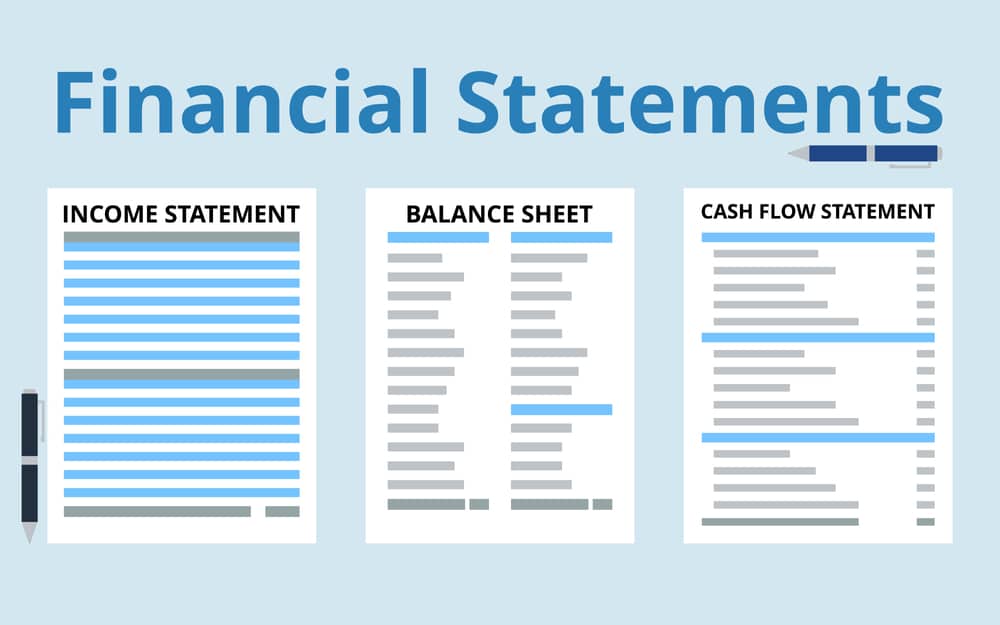When it comes to financial statements, you have several options available. One of them is the Notice to Reader (NTR) financial statements. This type of financial statement is designed for clients who don’t need or require an audit or review, but instead just wish to provide their stakeholders with a report on their finances. If your business works with external parties, such as banks and potential investors, you may need Notice to Reader financial statements to satisfy their requirements.
In this blog post, we’ll help you better understand Notice to Reader financial statements, when you need one, and how they can benefit your business.

What is a Notice to Reader Financial Statement?
A Notice to Reader (NTR) financial statement, now called a Compilation Engagement Report, is a financial statement compiled by an external Chartered Professional Accountant (CPA) based on the information provided by the business owner or the management of the company. The NTR financial statements are comprised of a balance sheet, an income statement, and may include a cash flow statement.
The accountant does not express an opinion or assurance on the financial statements prepared via compilation engagement because no procedures are performed to validate the accuracy or completeness of the company’s raw financial data provided. As a result, the Notice to Reader financial statements are prepared with a disclosure statement that an audit engagement or a review engagement was not performed, and accordingly, it does not contain an audit opinion or a review conclusion.
While no level of assurance is provided, the accounting firm must still comply with professional standards and abide by basic accounting principles. The accountant must apply professional judgment and consider the reasonability of the information provided by the client.
Should the CPA conclude that the data provided is not reasonable, then the compiled financial statements cannot be prepared based on that data and the accountant has the right to make this judgment call. If new information is provided, the CPA’s concerns must be satisfied before preparing the new NTR financial statement or report.
Although the NTR financial statement does not provide assurance on the accuracy or completeness of the financial information, it must still be prepared by a CPA, and a bookkeeper cannot prepare it.
When Do You Need a Notice to Reader Financial Statement?
A few scenarios may require a company to prepare financial statements. These financial statements can highlight the business’ credibility or satisfy a specific requirement.
Here are some common scenarios when you might need business financial statements:
Seeking a Bank Loan
Banks, financial institution, and creditors often require NTR financial statements provided by the accountant to verify and evaluate the credibility and trustworthiness of a business before they will provide a loan or credit.
This is one of the most common scenarios where a Notice to Reader financial statement is required (as opposed to recommended) as it is necessary to prove financial credibility. Providing a Notice to Reader is usually required, and it increases the chance of securing the right loan for your financial needs.
Annual Reporting to Owners or Shareholders
While this might not be a specific requirement, owners or shareholders often use Notice to Reader financial statements for insight into the business operations. It may be used at board meetings or with other important documents related to the business and its finances.
The business financial statement clarifies how cash is used, the profitability, and the company’s overall financial health.
Dealing with Investors
Many investors require audited or reviewed business financial statements, but Notice to Reader financial statements may suffice if you are a small business or a start-up.
Notice to Reader financial statements can be great resources for improving investors’ confidence as it would allow them to analyze the company’s current financial position and assess the future growth potential of the business.
Income Tax Filing
When filing a corporate tax return, the CPA may prepare financial statements to ensure that the company does not overpay taxes due to overstated income or understated expenses. This was a mandatory requirement in the past, but the accounting standard update (CSRS 4200) that came into effect on December 14, 2021 has made this optional.
Having said that, most businesses would prefer having a CPA issue the Notice to Reader financial statements to provide higher reliability on the financial information. This is a way to ensure that the company is optimizing its taxes since most tax planning strategies require using the company’s financial information.
Selling the Business
If you plan on selling your business, you can expect prospective buyers to review, at minimum, the Notice to Reader financial statements going back 2 to 3 years as part of their due diligence process. You may need reviewed or audited financial statements, especially if you intend on selling a larger business.
Financial Transparency
While Notice to Reader financial statements may be required for certain things, having these documents may be prudent to help you make crucial business decisions.
Notice to Reader financial statements can be used to provide critical insights into the company’s financial performance, so you can leverage its strength while identifying weaknesses for improvements. You can also use it to provide transparency for other shareholders involved in your business.
Documents Your Accountant Requires for Preparing a Notice to Reader Financial Statement
Generally, NTR financial statements are prepared at the end of the company’s fiscal year (e.g., December 31). To prepare the report, your accountant will need the following documents from your business:
- A Trial Balance with a reporting period that ends on the company’s fiscal year-end date. This is a report that shows all the accounts with a total debit balance equal to the total credit balance.
- A General Ledger shows a detailed listing of all transactions for each account for the same reporting period. The business bank and credit card statements for the entire fiscal year. If you incurred out-of-pocket expenses that are not paid from the business accounts, you would need to include a summary of all expenses paid to maximize all tax deductions.
- A reconciliation report for each bank and credit card account to ensure there are no missing or duplicate transactions. In other words, the reconciliation report ensures all transactions are being captured.
- The Accounts Receivable aging report shows the details of all amounts your customer or client owes to the business as of the year-end date.
- The Accounts Payable aging report shows the details of all amounts your company owes to the vendor or supplier as of the year-end date.
- The fixed asset continuity schedule for the most recent fiscal year. This schedule tracks all capital assets previously acquired by the company and the cumulative depreciation taken for each type of asset.
After your CPA conducts a preliminary review of the required documents, you may be asked to clarify certain transactions or a specific account. In certain situations, you may be asked to provide additional documents relating to the raw financial data you initially provided.
The turnaround time for financial statement report may take a few weeks to even a few months, depending on the size of the business, the nature of the business, the complexity of the transactions, and the total volume of transactions for the fiscal year. To avoid delays, work with a reliable bookkeeper to ensure the financial and tax records are in good order and be sure to collect the above documents before you meet with your CPA.
What Accounting Standard CSRS 4200 Means for Notice to Reader
Effective December 14, 2021, the Auditing and Assurance Standards Board (AASB) released a new Canadian accounting standard, CSRS 4200, which affects the way how Notice to Reader financial statements will be issued and used going forward.
In the past, compiled financial statements were issued by default when the CPA prepared the corporate taxes. This is no longer a requirement under the new compilation engagement standard CSRS 4200, as the corporate tax returns can now be prepared with internal financial information only without the Notice to Reader. Business owners should discuss with their accountants on whether a Notice to Reader report should still be prepared.
The business financial statement report is no longer called Notice to Reader; it is now called the Compilation Engagement Report.
In addition, the report contains a note which states the basis of accounting for the numbers reported on the financial statement.
The Compilation Engagement Report also clarifies the responsibility of the company’s management and the accountant respectively. The overall changes ensure that the report is appropriate for the intended user and provides greater clarity for any third-party readers.
How Much a Notice to Reader Financial Statement Costs
The cost of Notice to Reader financial statements can vary based on the extent of the business, its industry, the complexity of the transactions, and whether the end-user has specific requirements on the presentation of the financial statements.
Based on the current market rate, the cost for compilation engagement could start from $2,000 for a small business and go up to $4,500, depending on your business. The service would generally accompany preparing and filing the corporate tax return since it relies on the financial information on the Notice to Reader financial statements as a starting point.
Notice to Reader is the least expensive option compared to a review or audit engagement due to the lack of assurance the report provides. The cost of a review engagement can start from $3,500, and an audit engagement starts from $4,500 based on market rates.
To get a sense of how much Notice to Reader financial statements and accounting services cost your business, it is best to consult your accountant. You may find that you don’t need one, saving you time and money.
Notice to Reader Financial Statement vs. Review Engagement
Notice to Reader financial statements should not be confused with a review engagement. While the NTR does not provide any assurance, a review engagement (or reviewed financial statements) provides a limited level of assurance on the financial information. This type of assurance states that the company’s financial statements comply with the financial reporting framework (such as Generally Accepted Accounting Principles and International Financial Reporting Standards) to assure accuracy and correctness to a certain degree. Specifically, the CPA performs the work in accordance with Canadian generally accepted standards for review engagements.
A review engagement is often required instead of an Notice to Reader when the business applies for a larger bank loan. The lender would need a greater level of assurance on the financial statement to approve the loan, given the additional risks involved in the event of a default.
A review engagement must be conducted by licensed Chartered Professional Accountants (CPA), which primarily consists of inquiries with the company’s management and evaluates the financial information based on analytical procedures performed. The accountant will review the numbers and financial documents provided by the company, look for consistency in the documents provided, analyze account balances, and ask for clarification or more details if necessary.
In contrast, the financial information is compiled on an NTR based on the information provided by the business without the additional procedures and standards mentioned above.
Conclusion
A Notice to Reader financial statement could be useful (or even required) based on your company’s specific needs and circumstances.
If you have any questions on whether your business needs a Notice to Reader financial statement, reach out to our corporate tax accountant and we’ll be happy to go over your situation.
